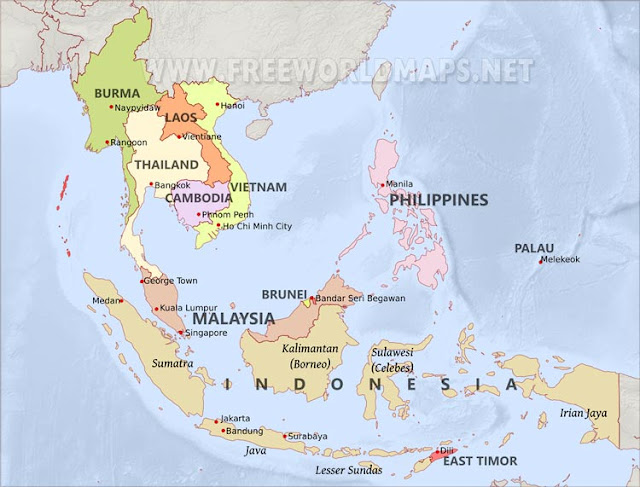Labuan, Malaysia
A New Perspective on WWII
Have you ever heard of Labuan? I hadn’t. But if you live in Australia, you likely studied about this place in your history class. Located along the northwest coast of Malaysian Borneo, Labuan was invaded by Japan in 1942. The island became its administrative center and naval base in the region. The city remained occupied until Allied forces (mostly from Australia) attacked and repossessed the area in 1945. This repossession was not without loss. Thousands of Allied soldiers and local residents lost their lives in the efforts to free Labuan from Japanese control until Japan finally surrendered. Without the bravery and sacrifices of the Australian Army and other Allied forces, the war could have ended very differently, and certainly, Labuan would not be the Labuan it is today.
Field Trips Throughout Labuan
The marina in Labuan is a bit of a pit, to say the least, but the surrounding areas offer plenty of excuses to stay off of the boat for school. History is all around us. First, we walk amongst over 1,700 gravemarkers in the Labuan War Cemetery. The solemn silence and tenderly tended gardens surrounding it enhance the experience; we feel the depth of the sacrifices these men made and the breadth of devastation that resulted from this event. Some of the Australian sailors we know in the rally actually have family members who served and are buried here, making history suddenly very real. One fellow boater who has studied extensively about WWII even invites us to his boat for an impromptu history lesson! Thank you, Rod!
 |
| Fitting in a bit of geography! |
 |
| A previous visitor left a poppy behind to honor the lives lost here |
 |
| A serene and somber memorial of history |
Not far from the cemetery, we drive to the Surrender Point Memorial. Here, we learn about the events that led to Japan’s ultimate defeat and surrender. Right next to the memorial, appropriately enough, is a giant sculpture that looks like a bridge of grass, a gift given to the people of Labuan from Japan as a promise of future peace. This is all a part of the WWII story that I never learned about until now.
In my online research of Labuan, I found a “Chimney” listed alongside a coal museum as a top attraction. Since we had rented the car for the entire day, we decide to continue our field trip.
The 32-meter tall brick chimney “...was built in the late 1890's. The purpose or usage of this chimney tower remains unknown until the present day, some say it was either built as a ventilation shaft, lighthouse or bell tower, and there were no traces of smoke to indicate that it was used as a normal chimney. The ground floor of the Chimney Museum exhibits the history of coal mining at Tanjung Kubong from 1847 to 1911.” (TripAdvisor.com review)
The 32-meter tall brick chimney “...was built in the late 1890's. The purpose or usage of this chimney tower remains unknown until the present day, some say it was either built as a ventilation shaft, lighthouse or bell tower, and there were no traces of smoke to indicate that it was used as a normal chimney. The ground floor of the Chimney Museum exhibits the history of coal mining at Tanjung Kubong from 1847 to 1911.” (TripAdvisor.com review)
Unmarked Trails
Behind the mysterious chimney, we find a trail that is barely visible through the tall grass. A vague map shows us that we could see an old Japanese ammunition bunker, striations of coal in the rocks along the shoreline, and old coal mining tunnels. Once we leave the map, however, it isn’t quite clear where we are supposed to go. Nothing is marked along the way and the trails aren’t well-trodden, but after some twists and turns (and u-turns), we eventually find our way back to the chimney where we started. The trail ended up being more of an adventure than we’d planned for, and we emerge from the bushes hungry, thirsty, and mosquito-bitten. Boy Scouts we are not.
The closest food spot happened to be some stalls set up along a popular beach. So, we grabbed a quick chicken satay, fried rice, and a few cold drinks and plopped ourselves down at one of the picnic tables. This field tripping can really take it out of you!
 |
| Sushi! |











Comments
Post a Comment